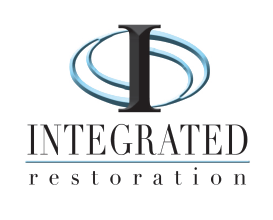Why Mold Spikes in Summer: How Cleveland Property Owners Can Stay Ahead of It
Warm weather in Northeast Ohio means longer days, higher humidity—and unfortunately, the perfect conditions for mold to grow and spread.
Whether you’re a homeowner or manage a commercial facility, it’s important to understand why mold becomes more active in summer, where it typically hides, and how to prevent small problems from turning into major repairs.
At Integrated Restoration, we help Cleveland-area property owners detect, contain, and remove mold before it becomes a threat to your property—or your health.
Why Mold Thrives in Summer
Mold needs three things to grow: moisture, warmth, and organic material. Summer delivers all three:
Higher humidity creates condensation on windows, walls, and HVAC systems
Warmer temps speed up mold’s reproductive cycle
Rain and storm damage often lead to damp drywall, flooring, or insulation
Poor ventilation in attics, basements, and crawlspaces traps moisture
Even if you haven’t had a recent water loss, residual moisture from spring rains—or winter damage you didn’t catch—can still trigger mold once the weather heats up.
Common Places Mold Hides During Summer
Mold doesn’t always show up where you expect. These are the most common spots we find it during summer inspections:
Basements and crawlspaces with poor drainage or high humidity
Behind walls with old water damage or plumbing leaks
Around windows and doors with condensation or failed seals
Attics with inadequate ventilation or roof leaks
HVAC systems and ductwork in high-humidity buildings
Bathrooms and laundry rooms with poor airflow
If you notice a musty smell—especially in rooms that feel damp or closed-off—it may be time to investigate further.
Explore our residential mold remediation services.
Explore our commercial mold remediation services.
Summer Mold Prevention Tips
You can’t control Cleveland’s humidity, but you can take steps to reduce your property’s mold risk.
Residential Tips:
Run dehumidifiers in basements and other damp areas
Keep the A/C running to improve ventilation and reduce indoor moisture
Use bathroom and kitchen fans regularly
Check under sinks and around appliances for leaks
Avoid carpeting in damp areas like basements
Commercial Tips:
Inspect rooftop HVAC units and ceiling vents for signs of condensation
Monitor basement and mechanical room humidity
Ensure regular gutter and drainage maintenance
Schedule routine inspections of flat roofing systems
Clean and service air filters and ductwork
Learn more about protecting your business from hidden mold issues here.
What to Do If You Suspect Mold
If you think you may have mold—don’t wait to confirm it.
Mold can:
Worsen respiratory conditions and allergies
Degrade drywall, flooring, and structural materials
Spread behind walls and ceilings within 24–48 hours
Lead to more extensive remediation costs the longer it goes unchecked
We recommend a professional mold assessment, especially if:
You smell a persistent musty odor
You’ve had recent water damage or flooding
You see discoloration on ceilings, walls, or floors
You manage a facility with closed-off or high-humidity areas

